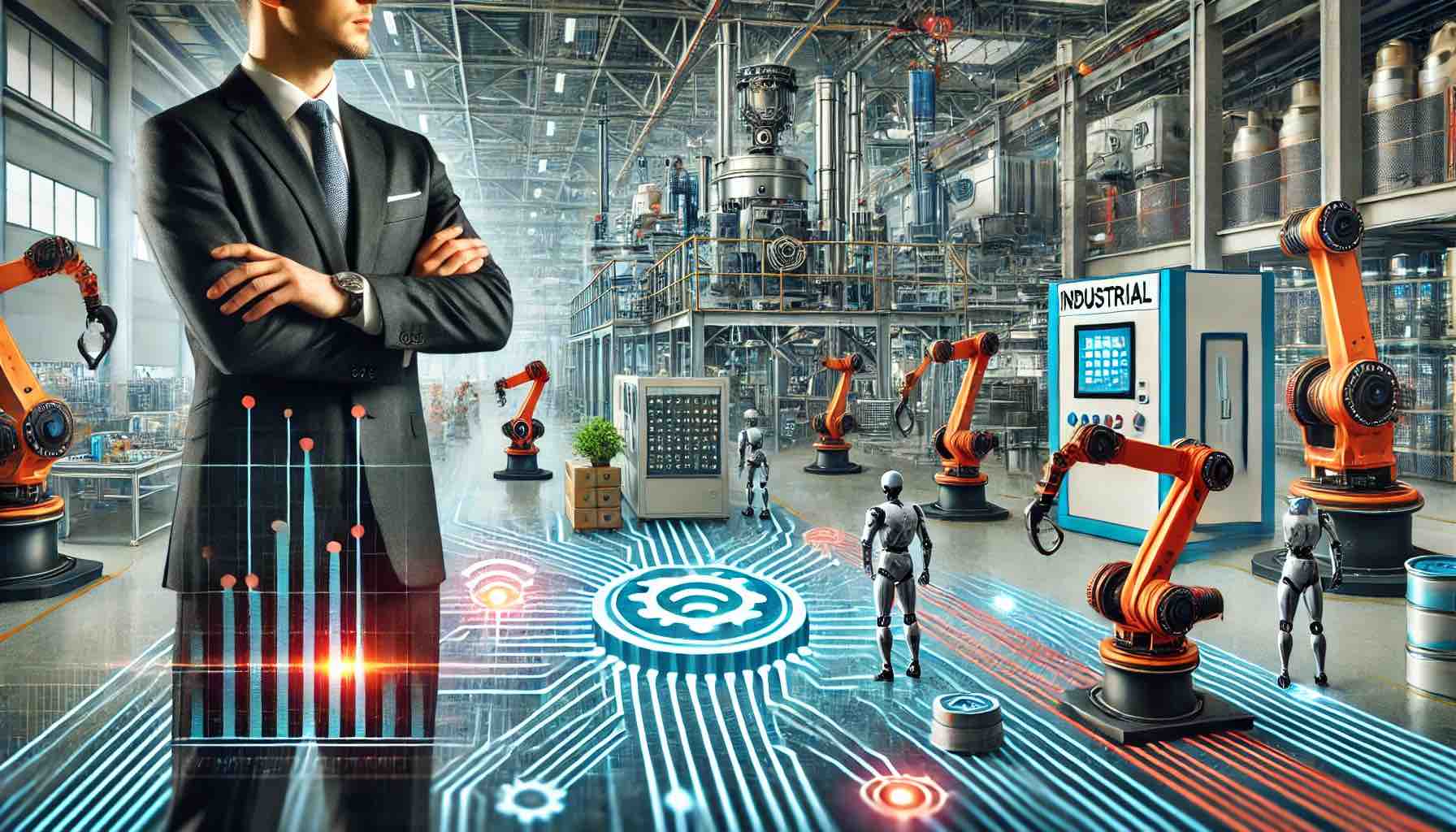

The industrial sensors market is an essential sector in the industrial automation industry, driving significant advancements in manufacturing, energy management, and other critical industries. Industrial sensors are used for various applications, such as detecting temperature, pressure, motion, gas, and liquid levels, enabling real-time monitoring and control of processes. With the ongoing adoption of Industry 4.0 and the Internet of Things (IoT), the global industrial sensors market is poised for steady growth from 2024 to 2025. This article reviews market size reports for the industrial sensors market across key regions, including London, the UK, Europe, Asia, India, China, Brazil, and the USA.
1. Global Overview of the Industrial Sensors Market (2024-2025)
Market Size Projections and Growth Drivers
The global industrial sensors market is expected to see significant growth in the coming years. According to a report by MarketsandMarkets, the global market size is projected to reach $29.9 billion by 2025, growing at a compound annual growth rate (CAGR) of 7.8% from 2020 to 2025. The key drivers of this growth include the increasing demand for industrial automation, the rise of smart factories, and the implementation of IoT solutions in various industries. Industrial sensors are becoming indispensable as manufacturers aim to increase efficiency, reduce downtime, and improve safety through real-time monitoring and control. Source: MarketsandMarkets.

Technological Advancements in Industrial Sensors
Technological advancements are a key factor driving the industrial sensors market. A report by Allied Market Research highlights the increasing adoption of wireless sensors, MEMS (Micro-Electro-Mechanical Systems) technology, and smart sensors as critical innovations contributing to market growth. These advancements allow industries to implement cost-effective and energy-efficient solutions while ensuring higher accuracy in data collection and process control. By 2025, these technologies are expected to be integral to industries such as automotive, energy, and healthcare. Source: Allied Market Research.
Impact of Industry 4.0 and IoT
The rise of Industry 4.0 and IoT is further accelerating the growth of the industrial sensors market. According to Fortune Business Insights, the increasing integration of IoT devices in industrial processes has transformed the way industries operate, enabling predictive maintenance, smart asset management, and data-driven decision-making.

Industrial sensors, particularly those related to temperature, pressure, and vibration monitoring, play a crucial role in IoT ecosystems, ensuring seamless connectivity between machines and systems. This trend is expected to drive strong demand for industrial sensors in the 2024-2025 period. Source: Fortune Business Insights.
2. Industrial Sensors Market in London and the UK
London as a Technology and Innovation Hub
London has established itself as a major hub for industrial technology and innovation, positioning the city as a key player in the industrial sensors market. A report by TechUK states that the UK’s industrial sensor market is expected to grow at a CAGR of 6.5% from 2024 to 2025, driven by advancements in automation and robotics. London, with its strong research institutions and tech ecosystem, plays a vital role in fostering innovation in sensor technology, particularly in the development of smart sensors for industrial applications. Source: TechUK.

UK’s Manufacturing Sector and Industrial Sensors
The UK’s manufacturing sector is another key driver of growth for the industrial sensors market. According to a report by Make UK, the adoption of industrial sensors in smart factories and advanced manufacturing is set to increase as manufacturers seek to improve operational efficiency and reduce production costs. The report notes that by 2025, over 60% of UK manufacturers are expected to adopt industrial IoT solutions, which will require the widespread deployment of industrial sensors to monitor and control various processes. Source: Make UK.
Government Support and Regulations
Government initiatives and regulations in the UK are also fostering the growth of the industrial sensors market. The UK government’s focus on digitalization and sustainability is driving investments in industrial technologies, including sensors. A report by BEIS (Department for Business, Energy & Industrial Strategy) highlights government incentives for digital transformation in manufacturing, which is expected to boost the adoption of industrial sensors in sectors such as energy, automotive, and healthcare by 2025. Source: Gov.UK.

3. Industrial Sensors Market in Europe
Europe’s Leadership in Industrial Automation
Europe is a global leader in industrial automation, and the industrial sensors market is expected to grow steadily in the region. According to Statista, the European industrial sensors market is projected to reach €9.8 billion by 2025, with a CAGR of 5.7% from 2021 to 2025. Countries such as Germany, France, and Italy are leading the charge in the adoption of smart manufacturing and automation technologies, with a high demand for sensors used in process control, safety monitoring, and energy management. Source: Statista.
Germany’s Dominance in the European Market
Germany is the largest market for industrial sensors in Europe, accounting for a significant share of the region’s market. A report by Frost & Sullivan indicates that Germany’s industrial sensors market is expected to grow at a CAGR of 6.2% between 2024 and 2025, driven by the country’s focus on industrial digitization and the implementation of Industry 4.0. Germany’s automotive and manufacturing sectors are key consumers of industrial sensors, particularly those related to pressure, proximity, and motion detection. Source: Frost & Sullivan.

European Regulations and Standardization
The European Union’s regulatory framework for industrial sensors plays an important role in shaping the market. A report by European Commission highlights that EU regulations related to environmental sustainability and worker safety are driving the demand for sensors that monitor emissions, temperature, and hazardous conditions in industrial environments. Compliance with these regulations is expected to boost the adoption of advanced sensors across Europe’s manufacturing and energy sectors. Source: European Commission.
4. Industrial Sensors Market in Asia
Rapid Growth in Asia-Pacific
Asia-Pacific is the fastest-growing region for the industrial sensors market, with countries like China, India, and Japan leading the way. According to Research and Markets, the Asia-Pacific industrial sensors market is expected to reach $10.2 billion by 2025, with a CAGR of 8.9% from 2020 to 2025. The region’s rapid industrialization, increasing investments in infrastructure, and the rise of smart cities are key factors driving this growth. Additionally, the adoption of IoT and automation technologies in sectors such as manufacturing, energy, and automotive is creating significant demand for industrial sensors. Source: Research and Markets.

China’s Role as a Manufacturing Powerhouse
China is the largest market for industrial sensors in Asia, accounting for a significant share of the region’s market. A report by GlobalData indicates that China’s industrial sensors market is expected to grow at a CAGR of 9.1% between 2024 and 2025, driven by the country’s focus on industrial automation and smart manufacturing. China’s government initiatives, such as Made in China 2025, are encouraging the adoption of advanced sensor technologies in the country’s manufacturing and energy sectors. Source: GlobalData.
India’s Growing Market for Industrial Sensors
India’s industrial sensors market is also experiencing rapid growth, with increasing demand for automation in manufacturing and energy sectors. According to a report by TechNavio, the Indian industrial sensors market is projected to grow at a CAGR of 10.2% from 2024 to 2025. The report highlights that the Indian government’s focus on Make in India and Digital India initiatives are driving investments in industrial automation, creating new opportunities for sensor manufacturers. Source: TechNavio.

5. Industrial Sensors Market in Brazil
Brazil’s Emerging Industrial Sensors Market
Brazil is an emerging market for industrial sensors, with growing demand for automation and IoT solutions in various sectors. According to a report by MarketsandMarkets, the industrial sensors market in Brazil is expected to grow at a CAGR of 7.5% from 2024 to 2025, driven by increasing investments in infrastructure, energy, and manufacturing. Brazil’s growing adoption of smart technologies in agriculture and energy management is also creating opportunities for sensor manufacturers. Source: MarketsandMarkets.

Industrial Automation in Brazil
Brazil’s industrial automation sector is rapidly evolving, with the adoption of Industry 4.0 technologies driving the demand for industrial sensors. A report by Frost & Sullivan indicates that Brazil’s manufacturing sector is increasingly adopting smart sensors for real-time monitoring, process optimization, and safety applications. The country’s automotive and oil & gas industries are key consumers of industrial sensors, particularly those related to pressure, temperature, and vibration monitoring. Source: Frost & Sullivan.
Government Support for Industry 4.0
Brazil’s government is actively promoting the adoption of Industry 4.0 technologies through various initiatives and incentives. According to a report by ABDI (Brazilian Agency for Industrial Development), the government’s focus on modernizing the country’s manufacturing sector is expected to boost the adoption of industrial sensors in the coming years. This support, combined with Brazil’s strong industrial base, is expected to drive growth in the industrial sensors market between 2024 and 2025. Source: ABDI.

6. Industrial Sensors Market in the USA
The Largest Industrial Sensors Market
The USA is the largest market for industrial sensors, accounting for a significant share of the global market. According to a report by IBISWorld, the industrial sensors market in the USA is projected to reach $9.7 billion by 2025, growing at a CAGR of 5.3% from 2021. The demand for industrial sensors in the USA is driven by the country’s advanced manufacturing sector, high adoption of automation technologies, and increasing focus on energy efficiency and safety. Source: IBISWorld.
Industrial IoT Adoption in the USA
The adoption of Industrial IoT (IIoT) technologies in the USA is a key driver of growth for the industrial sensors market. According to a report by McKinsey & Company, the USA’s industrial sector is increasingly implementing IIoT solutions to improve operational efficiency, reduce downtime, and enhance safety. Industrial sensors are at the core of these solutions, providing real-time data for predictive maintenance, asset tracking, and process optimization. Source: McKinsey.

Government Regulations and Standards
The US government’s focus on safety regulations and environmental standards is also driving the demand for industrial sensors. A report by Grand View Research highlights that regulations related to worker safety, emissions control, and energy efficiency are pushing industries to adopt advanced sensor technologies. This trend is expected to continue through 2025, with increasing demand for sensors used in monitoring hazardous environments and ensuring compliance with safety standards. Source: Grand View Research.
Conclusion
The industrial sensors market is poised for strong growth across all major regions, driven by technological advancements, increasing adoption of Industry 4.0, and government support for industrial automation. London and the UK are emerging as key players in the industrial sensors space, while Europe remains a global leader in automation. Asia, led by China and India, offers the most dynamic growth opportunities, and Brazil is rapidly adopting smart technologies. The USA maintains its position as the largest market for industrial sensors, supported by advanced manufacturing and regulatory frameworks. Investors looking to capitalize on these trends should consider region-specific opportunities and stay updated on the evolving technologies and regulations shaping the industrial sensors market.
References
- MarketsandMarkets: https://www.marketsandmarkets.com/
- Allied Market Research: https://www.alliedmarketresearch.com/
- Fortune Business Insights: https://www.fortunebusinessinsights.com/
- TechUK: https://www.techuk.org/
- Make UK: https://www.makeuk.org/
- Gov.UK: https://www.gov.uk/
- Statista: https://www.statista.com/
- Frost & Sullivan: https://www.frost.com/
- European Commission: https://ec.europa.eu/
- Research and Markets: https://www.researchandmarkets.com/
- GlobalData: https://www.globaldata.com/
- TechNavio: https://www.technavio.com/
- IBISWorld: https://www.ibisworld.com/
- McKinsey: https://www.mckinsey.com/
- Grand View Research: https://www.grandviewresearch.com/



























